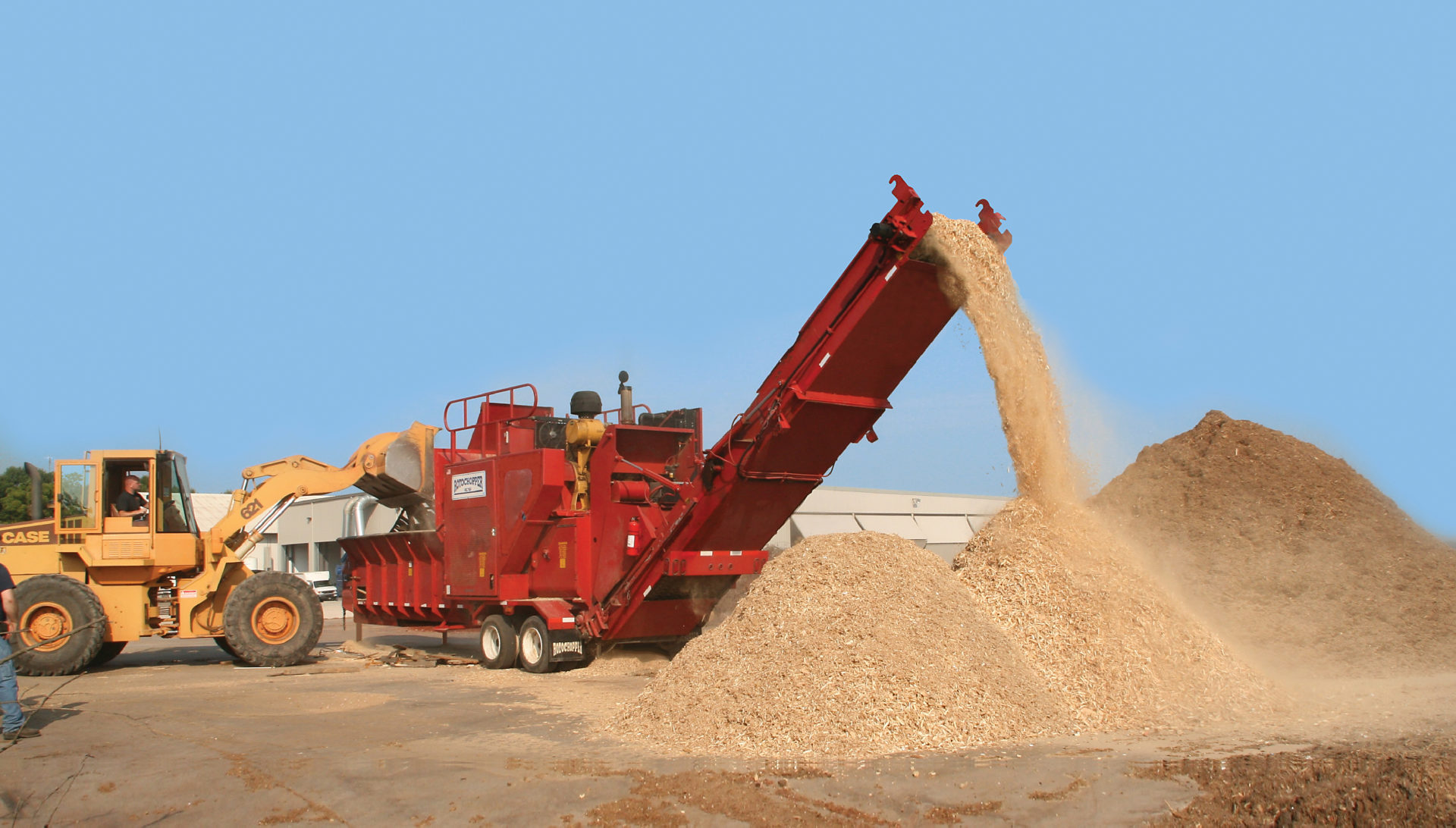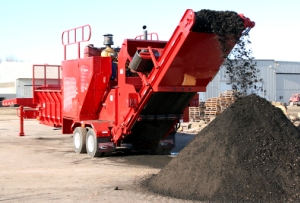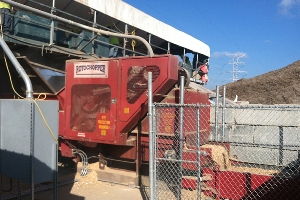
Expanding into C & D Recycling

When I began to work with Steve on this recycling project, we looked at the volumes of wood and shingles and the other factors that would determine the appropriate grinder. Given the relatively small initial volumes of wood and shingles, Schweitzer was leaning toward used equipment. I told Steve about our factory refurbishment program and an available grinder that would be an excellent fit for his needs.
“Rotochopper was especially helpful in analyzing the equipment issues and coming up with solutions.”
Choosing a Refurbished Grinder for Wood & Shingles
In 2013 C & D Recycling took delivery of a refurbished MC-256 diesel horizontal grinder equipped to handle both wood and asphalt shingles. Schweitzer quickly realized that their volumes justified two machines: one specifically suited for batch grinding shingles and a second machine for grinding wood in line with their picking station. Later that year they began looking for a used Rotochopper EC-266 electric powered grinder to sit in line with their picking station. Since the Rotochopper factory did not have any refurbished electric grinders available at the time, Steve turned to the open market and found an EC-266 with the right horsepower.
Today, both machines are grinding wood and shingles with consistent uptime and low operating costs, but according to Schweitzer, getting to that point is a tale of two different machines.
Streamlined Delivery & Set-up
Upon delivery of the MC-256, a Rotochopper product specialist arrived on site to commission the machine and perform hands on training for operators. The product specialist realized that the colorizer was not functioning up to par and that the screens with the grinder were not going to produce the particle size that C & D Recycling was looking for in their finished product. “Sam [the on-site product specialist] fixed the colorizer issue and had the screens sent down the same day the machine was delivered,” Schweitzer says.
After a follow up visit shortly thereafter, Steve’s recycling center was processing shingles and wood on a daily basis. As Schweitzer notes, these minor setbacks quickly faded into memory, and the refurbished MC-256 was busy grinding wood and shingles.
Used Grinder Comes with Surprises

As Steve notes, a major determining factor between the used grinder and the refurbished grinder was the level of knowledge that guided the whole process. The seller of the used grinder ran it for several years and knew it very well from an operation and maintenance standpoint. They knew quite well how the grinder fit into their business, but they didn’t know everything that was needed to make it fit into someone else’s business.
They didn’t know the details to consider when selling the grinder to another company. As a result, the delivery and set-up of the grinder was filled with surprises.
The electric grinder is working now after considerable work by Steve’s crew. “After the dust settled,” Steve says, “we realized the challenges we were not prepared for. Even then, Rotochopper worked with us to tie down what needed to be installed to get the EC grinder up and running. Rotochopper was especially helpful in analyzing the equipment issues and coming up with solutions.”
Connecting Knowledge with Equipment
The experience of getting these two grinders up and running gives Schweitzer firsthand knowledge of the advantages of refurbished equipment over used equipment. As Schweitzer is quick to point out, some of the most important differences between the used wood grinder and the refurbished wood grinder were not related to the conditions of the two machines. Rather, the distinguishing factors resulted from the people involved and the guidance those people were able to provide.
Schweitzer stresses that it wasn’t the condition of the machine that made the installation of the EC-266 challenging—it was a lack of proper knowledge. Steve didn’t know all the right questions to ask, and the seller didn’t have all the right answers to give.
By working directly with the Rotochopper factory on the refurbished MC-256, Schweitzer was able to draw upon the experience of factory technicians, engineers, and product specialists to end up with the right results. Given the complexity of installing an electric powered grinder, that knowledge was noticeably missing in the installation of the used EC-266.
The Factors that Drive Grinder Profitability
Today, those initial challenges give Schweitzer invaluable insight into the most important factors that drive the profitability of grinding operations, namely the ability to make a saleable product while minimizing costs like downtime. Although these challenges brought considerable frustration early on, these experiences keep Steve focused on the right factors in the day to day operation of the C & D recycling facility: uptime, end product control, and most importantly, cost per ton or cubic yard of finished product.
Learn More
To learn more about the factors that determine grinder profitability for new, used, and refurbished equipment, check out 5 Ways to Maximize Grinder Profitability.
.
